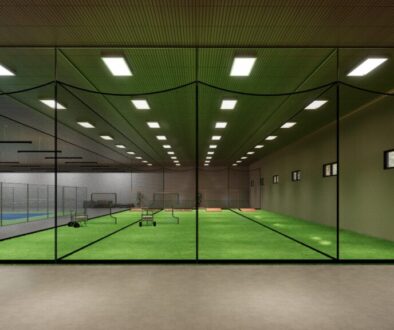How to Create Sports Facility Sponsorship Packages
We sports facility owners are always looking for ways to boost our profits. So if local businesses partner with us by sponsoring our teams, players or programs, it can be a big win.
There many ways to structure sponsorship packages successfully. However, there are also lots of ways to let sponsorships distract from your mission and even hurt your brand.
Before you accept sponsorship money or start creating sponsorship packages, you have some work to do.
First, a cost benefit analysis
Step one is to consider whether it’s worthwhile to offer sponsorships at all.
They take effort and possibly cash to create and promote, just like any other product.
Also, sponsors will expect value back from what they give you. Usually they expect sales from the ad exposure or at least proof that their ad was seen. They also need to feel appreciated, and expect a thank you plaque or photo they can display.
Keeping that in mind, consider how much time you expect to put into a sponsorship program. What sponsorship levels would be worth it for your organization?
Just as catering to non-ideal customers or pushing less profitable services can distract you from what’s best for your business, so can low-paying or off-brand sponsors. You didn’t get into this business to sell ads, after all — you got into it to train athletes.
Instead of offering sponsorships, you may be better off tweaking your pricing or your expenses, or finding that extra revenue by selling complementary services.
Consider how sponsorships fit into your brand
That said, sponsorship sales will still be a great option for most.
If you’re running a nonprofit such as a community youth sports league with low-as-possible entry costs, they’re a no-brainer. Sponsors usually can get tax write-offs for sponsoring you because of your nonprofit status. You can boost your image as a community partner and someone helping local kids by reaching out to all kinds of local businesses.
However, if you’re running a for-profit business — especially one with premium rates such as a boutique training facility for college-bound athletes, your main appeal to sponsors will likely be their potential financial return on investment or the boost their brand gets for exclusive access to your elite team. You’ll want to be more selective about which sponsors reflect your brand.
Most sports facilities fall somewhere in between those two types. However, regardless of your business structure, you should only seek sponsorships from businesses or organizations who you feel reflect your own sports academy’s values and personality. That’s what keeps your brand strong.
What financial role will sponsorships play?
Before you start offering sponsorships, consider what financial role you want them to play in your business.
They might be central to the business plan of a nonprofit youth sports organization, while other sports facilities might just expect some supplemental income from sponsorships for a specific part of the business, such as teams.
Either way, it’s a good idea to set annual sponsorship goals and build packages based on those goals. You should figure out:
- How many sponsors you’d like each year – The actual number of sponsors you have may depend on available space (for example, outfield ad space). Remember: The more sponsors you have, the more energy you’ll spend and the greater your risk of ad space looking cluttered.
- How much financial value you want from sponsorships – It’s often a better deal for both you and the sponsor to work a trade agreement rather than exchanging cash. For example, a screen printing shop might give you a discount if they can also get some ad space on your web site or emails.
- How formal your program will be – Do you want an official sponsorship rate card where everyone gets the same deal, or do you want to develop less formal agreements for each individual sponsor? The latter can be easier to sell but can also be more confusing. Consider that your sponsors will probably talk to one another, especially if their kids are involved with your facility.
- Sales deadlines – Landing sponsorships can be easier if there’s a firm commitment date. This is also essential for your staff and your coaches, whose budgets may be affected by how many are sold. Limiting the sponsorship drive to once or so a year can also save you time by consolidating your sales efforts.
Choose how to structure sponsorship packages
Once you’ve established your sponsorship goals, you can finalize what you’d like to offer. Here are a few ideas I’ve seen sports facilities successfully use:
- ads in marketing emails
- ads in scheduling emails, receipts, scheduling software (eSoft Planner lets you customize the text users see when they log in and schedule)
- ad space on your facility’s web site
- physical ads in the facility (keep in mind that these can get expensive to print)
- ads or logos on athletes’ uniforms and gear (bags, practice apparel)
- exposure on your social media accounts
- verbal mentions at special events such as tournaments or end-of-the-year awards
Sponsorships can also be structured so that they’re devoted to a certain team, event, program or even area of the facility. You can get as creative as you’d like if it helps you sell.
Once you’ve decided what to offer, you’ll need an agreement describing the terms. Get sponsors’ signatures or other documented approval on the sponsorship terms before you execute them.
If you have any suggestions for creating sponsorship opportunities, please leave a comment below.



